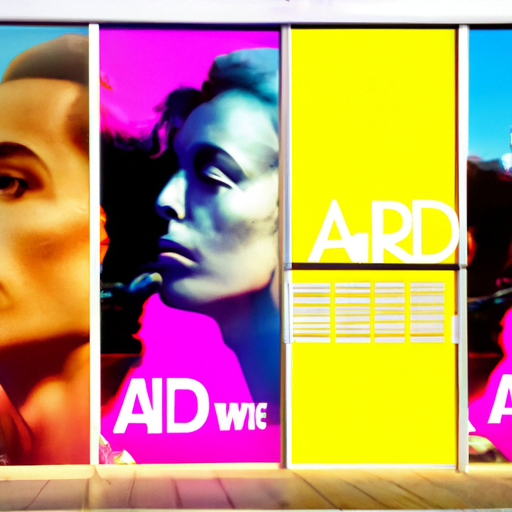-
Table of Contents
AI in Outdoor Advertising: Dynamic Billboards and Beyond
Outdoor advertising has long been a staple of marketing campaigns, with billboards lining highways and city streets, capturing the attention of passersby. However, in recent years, the integration of artificial intelligence (AI) has revolutionized the outdoor advertising industry, making billboards more dynamic, personalized, and effective than ever before. In this article, we will explore the various applications of AI in outdoor advertising, from dynamic billboards to audience targeting, and discuss the potential future developments in this exciting field.
The Rise of Dynamic Billboards
Traditional billboards have always been static, displaying the same message to every viewer regardless of their demographics, interests, or preferences. However, with the advent of AI, billboards can now adapt and change in real-time, tailoring their content to the specific audience that is viewing them.
One example of dynamic billboards in action is the “Look Up” campaign by British Airways. Using AI-powered technology, billboards at London’s Piccadilly Circus would display a child pointing at passing airplanes, accompanied by the flight number and its origin. This personalized approach not only captured the attention of viewers but also created a sense of wonder and excitement, ultimately driving engagement and brand awareness.
Another notable example is the “Dreams of Dali” campaign by The Dali Museum in Florida. By leveraging AI and facial recognition technology, billboards would analyze the facial expressions of viewers and display different images based on their emotional responses. This interactive experience not only enhanced the viewer’s engagement but also showcased the museum’s commitment to innovation and creativity.
Enhancing Audience Targeting
AI has also revolutionized audience targeting in outdoor advertising, allowing marketers to reach the right people at the right time with highly relevant messages. By analyzing vast amounts of data, AI algorithms can identify patterns, preferences, and behaviors, enabling advertisers to deliver personalized content to specific demographics or even individuals.
One example of AI-powered audience targeting is the “Hello World” campaign by Coca-Cola. Using data from social media platforms, AI algorithms identified specific locations where people were more likely to feel stressed or overwhelmed. Coca-Cola then placed billboards in those areas, displaying messages of positivity and encouragement. This targeted approach not only resonated with the audience but also reinforced Coca-Cola’s brand image as a source of happiness and refreshment.
Another notable example is the “Share a Coke” campaign by Coca-Cola. By analyzing data on popular names and demographics, AI algorithms generated personalized billboards that displayed the viewer’s name alongside the iconic Coca-Cola logo. This highly personalized approach not only caught the attention of viewers but also encouraged social sharing and user-generated content, amplifying the campaign’s reach and impact.
AI-Powered Analytics and Optimization
AI is not only transforming the content and targeting of outdoor advertising but also the way campaigns are measured and optimized. By leveraging AI-powered analytics, advertisers can gain valuable insights into the effectiveness of their campaigns, allowing them to make data-driven decisions and optimize their strategies for maximum impact.
One example of AI-powered analytics in outdoor advertising is the “Look Out” campaign by Volvo. By equipping billboards with AI-powered cameras, Volvo was able to detect and analyze the make and model of passing cars. This data, combined with location and time information, allowed Volvo to measure the effectiveness of their outdoor advertising efforts and optimize their campaigns based on real-time insights.
Another notable example is the “Smart Bench” campaign by Strawberry Energy. By integrating AI-powered sensors into benches, Strawberry Energy was able to collect data on foot traffic, weather conditions, and user behavior. This data, combined with AI algorithms, allowed Strawberry Energy to optimize the placement and design of their benches, ensuring maximum visibility and engagement.
The Future of AI in Outdoor Advertising
As AI continues to advance, the possibilities for its application in outdoor advertising are virtually limitless. Here are some potential future developments that we can expect to see:
- Real-time weather-based advertising: AI algorithms can analyze weather data and adjust billboard content accordingly. For example, an outdoor clothing brand could display different ads based on the current weather conditions.
- Contextual advertising: AI algorithms can analyze contextual factors such as time of day, location, and nearby events to deliver highly relevant and timely messages to viewers.
- Interactive billboards: AI-powered billboards can incorporate touchscreens, voice recognition, and augmented reality to create immersive and interactive experiences for viewers.
- Emotion detection: AI algorithms can analyze facial expressions and emotional responses of viewers to deliver personalized content that resonates with their emotions.
Summary
AI has transformed outdoor advertising, making billboards more dynamic, personalized, and effective than ever before. Dynamic billboards can adapt and change in real-time, tailoring their content to the specific audience that is viewing them. AI-powered audience targeting allows marketers to reach the right people at the right time with highly relevant messages. AI-powered analytics and optimization enable advertisers to measure the effectiveness of their campaigns and make data-driven decisions. The future of AI in outdoor advertising holds even more exciting possibilities, including real-time weather-based advertising, contextual advertising, interactive billboards, and emotion detection. As AI continues to advance, the outdoor advertising industry will undoubtedly continue to evolve, creating new opportunities for brands to engage with their audiences in innovative and impactful ways.
